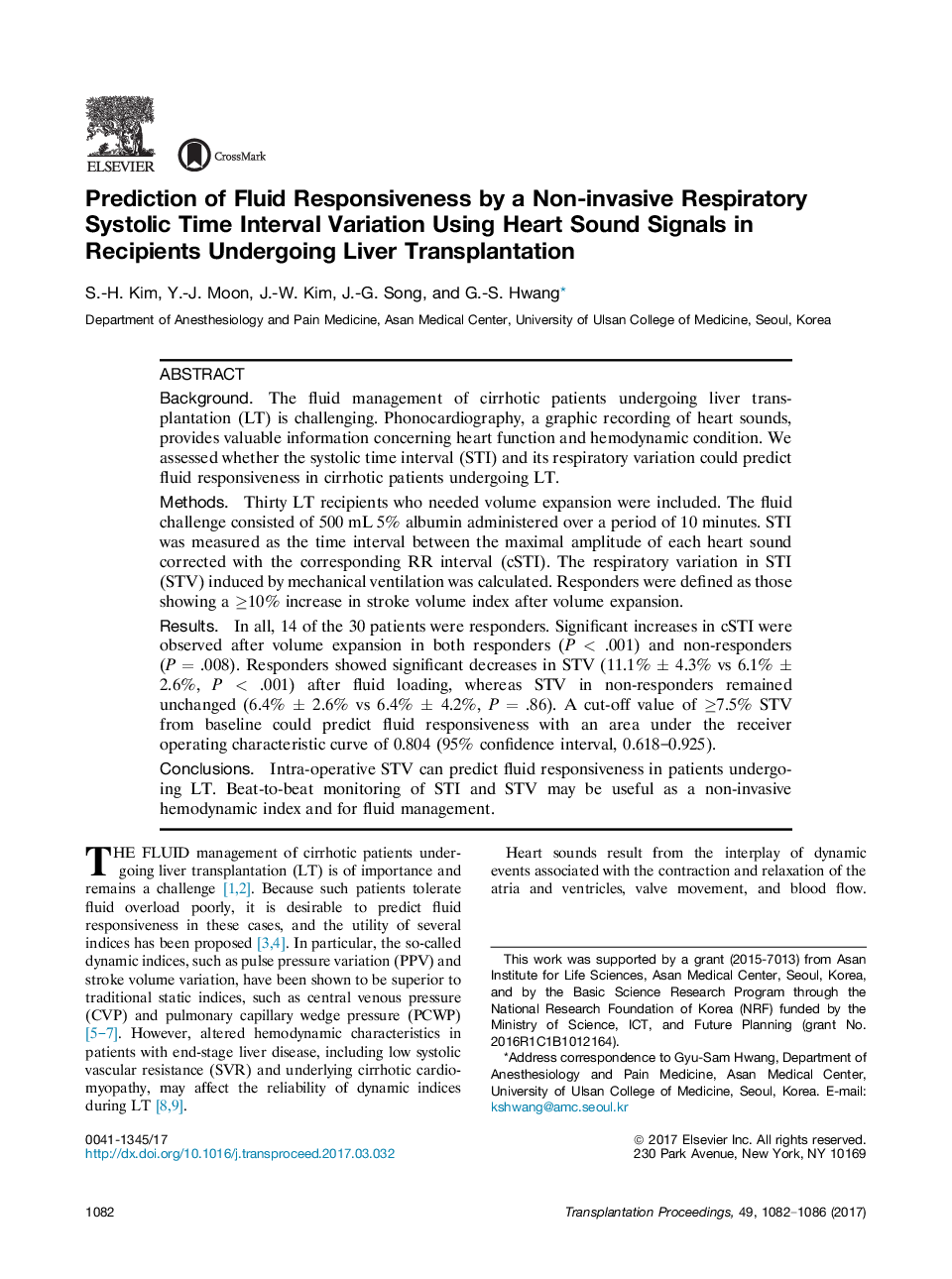| Article ID | Journal | Published Year | Pages | File Type |
|---|---|---|---|---|
| 5728804 | Transplantation Proceedings | 2017 | 5 Pages |
BackgroundThe fluid management of cirrhotic patients undergoing liver transplantation (LT) is challenging. Phonocardiography, a graphic recording of heart sounds, provides valuable information concerning heart function and hemodynamic condition. We assessed whether the systolic time interval (STI) and its respiratory variation could predict fluid responsiveness in cirrhotic patients undergoing LT.MethodsThirty LT recipients who needed volume expansion were included. The fluid challenge consisted of 500 mL 5% albumin administered over a period of 10 minutes. STI was measured as the time interval between the maximal amplitude of each heart sound corrected with the corresponding RR interval (cSTI). The respiratory variation in STI (STV) induced by mechanical ventilation was calculated. Responders were defined as those showing a â¥10% increase in stroke volume index after volume expansion.ResultsIn all, 14 of the 30 patients were responders. Significant increases in cSTI were observed after volume expansion in both responders (P < .001) and non-responders (P = .008). Responders showed significant decreases in STV (11.1% ± 4.3% vs 6.1% ± 2.6%, P < .001) after fluid loading, whereas STV in non-responders remained unchanged (6.4% ± 2.6% vs 6.4% ± 4.2%, P = .86). A cut-off value of â¥7.5% STV from baseline could predict fluid responsiveness with an area under the receiver operating characteristic curve of 0.804 (95% confidence interval, 0.618-0.925).ConclusionsIntra-operative STV can predict fluid responsiveness in patients undergoing LT. Beat-to-beat monitoring of STI and STV may be useful as a non-invasive hemodynamic index and for fluid management.
